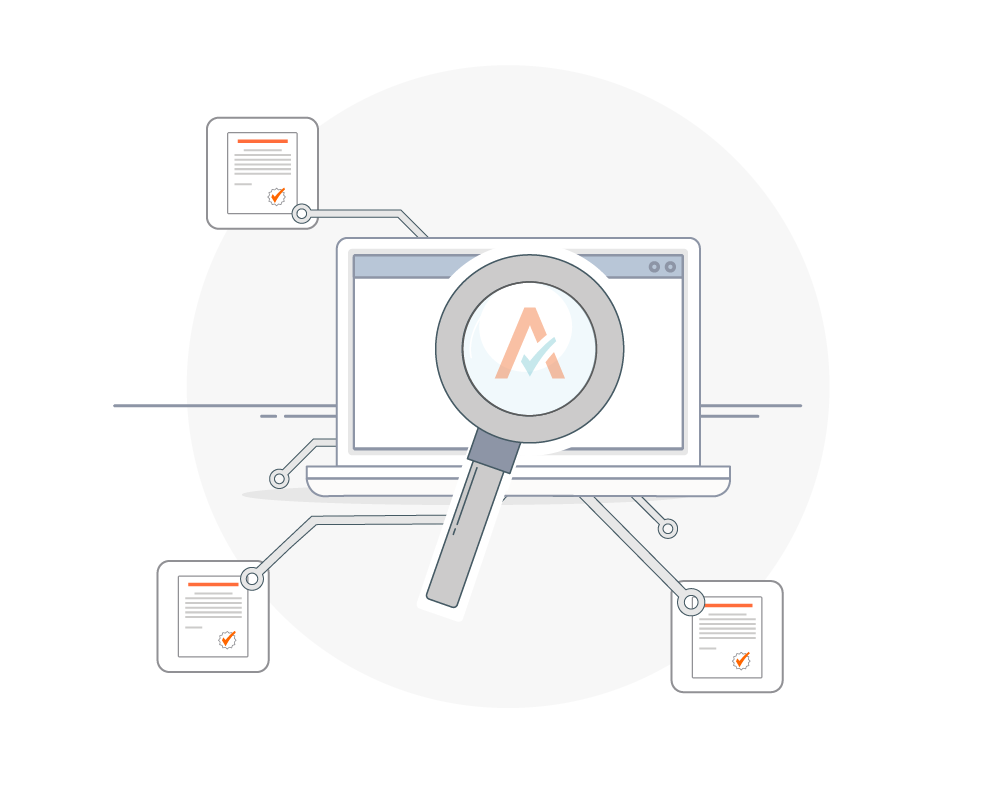Chapter 2: Integrating a Sales Tax Solution
Sales tax is a complicated world. We’ve put together this series to give you the information you need to navigate the complexities of compliance, as well as the solutions offered through sales tax technology. In this chapter, we cover the common considerations when it comes to implementing sales tax technology with your business processes.

Why do I need a sales tax solution?
Transaction taxes are a complex matter. There are many thousands of tax jurisdictions throughout the world, with over 12,000 in the United States alone — when, how, where, and what gets taxed varies from state to state, country to country, and trade bloc to trade bloc. Suffice to say, complying with the rules and changes in multiple jurisdictions is nearly impossible if you rely on a manual system.
Complying with the rules and changes in multiple jurisdictions is nearly impossible if you rely on a manual system.
A sales tax solution automates the various aspects of the process, ensuring compliance with a higher degree of accuracy, while requiring fewer resources.
When should I consider implementing a sales tax solution?
There are pertinent times when it makes sense to automate your sales tax process. Wait too long, and you risk making costly yet entirely avoidable errors. The key is to automate before you run into compliance problems. The following are ideal times to consider implementing sales tax automation.
Ahead of financial events
When you’re preparing for a merger or acquisition, an IPO, or additional funding rounds, your finances are placed under a microscope. Though sales tax may seem like a rather niche aspect of the company ledger, non-compliance can open the door to huge penalties and fees — enough to devalue your company or cancel deals altogether.
Pending company growth
Whether you’re creating divisions, expanding into additional markets, or launching new products, growth can have a significant effect on your tax obligations. Even if you’ve previously managed to bootstrap a manual process, growth doesn’t just add tax complexity, it multiplies it dramatically. Automating the process helps prevent overlooking the liabilities that could turn your growth plan into a tax nightmare.
Leadership and technology shifts
When you bring in a new CFO or update your technology platform, it’s an ideal time to assess whether your sales tax process is cutting it. And not only for your current tax burden; oftentimes, long-term plans become clearer during these times of change, and you’ll need to assess whether your solution will hinder or enhance your ability to achieve your goals.
OK, I need a solution. Where do I start?
Once you’ve decided to automate your sales tax process, you need to make sure you’re working with the right information. A good place to start is with reassessing your nexus obligations. Take stock of where you make sales and whether you’ve triggered nexus in any additional jurisdictions. The rules vary from place to place and change as new legislation is enacted. Depending on the complexity of your business, it may be beneficial to contract with a third party to conduct your nexus analysis.
If you find you have nexus in additional locations, you can begin the automation process with registration. Registration programs give you the option of entering your information once, then simply checking a box for each location in which you need to register. Programs track registration fees, rules, and expirations, so you don’t have to piece together the information yourself.
How do I choose the right solution?
Once you know the scope of your nexus obligation and you’re properly registered, you can strategize a sales tax solution that works for your company. There’s a lot of back-end planning that goes into choosing the right system. You’ll need to determine both short- and long-term growth plans, identify where your current system is lacking, and compare the available options to balance cost and coverage. You can read more on this in Chapter 3: Developing a Sales Tax Strategy.

Regardless of the details specific to your business, you’ll need a solution that covers the four core functionalities of sales tax compliance:
- Accurate tax calculation
- Comprehensive certificate management
- Timely returns management and remittance
- Dynamic reporting capabilities
It’s also important to choose a solution that prioritizes innovation and product delivery. To ensure you’re working with a long-term partner, you need someone who can grow and adapt to the ever-changing tax landscape. That requires a solution with evolving functionality that covers a broad range of needs. For instance, even if you aren’t selling internationally now, the trajectory of online sales and interwoven global markets indicates you’re likely to in the future. You need to be certain your sales tax solution doesn’t hinder your growth or become irrelevant as soon as you expand across borders.
A cloud-based tax solution takes the onus of updating and managing information off your IT team, freeing them from tax-related tasks while also making your finance team more agile.
One of the most important factors of your decision is choosing a cloud-based solution. SaaS solutions offer growth and adaptability that legacy systems just can’t compete with. A cloud-based tax solution takes the onus of updating and managing information off your IT team, freeing them from tax-related tasks while also making your finance team more agile. In a truly automated fashion, tax rates are calculated in real time at the point of purchase, based on current rules with rooftop accuracy.
Do I have to scrap all my other business systems?
Only if you want to. If your accounting, marketplace, ERP, invoicing, POS, and ecommerce systems are working for you, you can use a sales tax solution that integrates with them. Many of the popular business systems partner with sales tax software companies to build connectors, so implementation happens in hours, not weeks or months.
If you have a bespoke or highly customized ecosystem, you’re not out of luck. A sales tax solution with a solid API can be tailored to work within the parameters of your system without requiring a significant amount of downtime.
The bottom line: Automating sales tax doesn’t mean starting from scratch.
Schedule a demo and see how it can help you save time getting tax right










